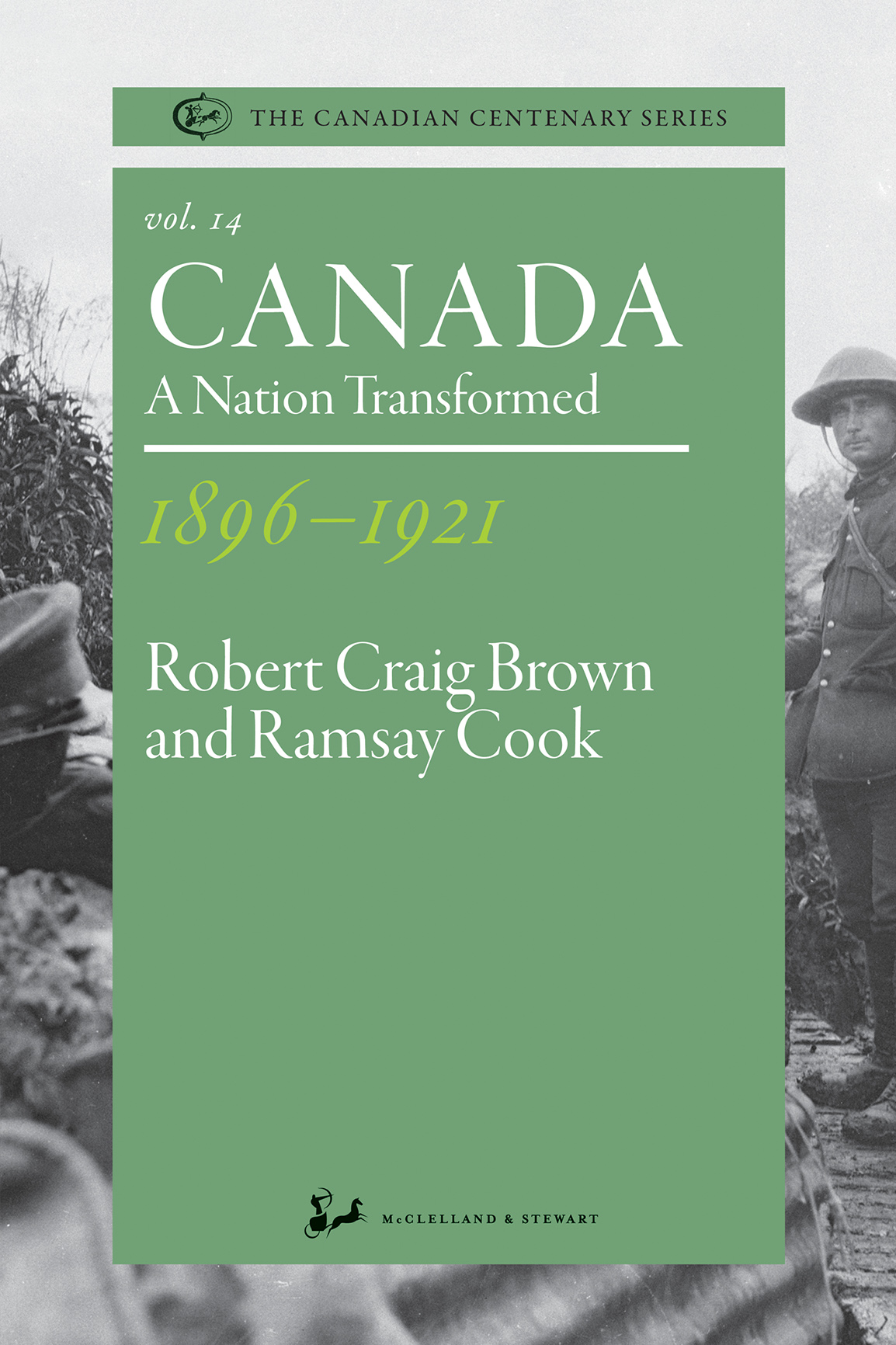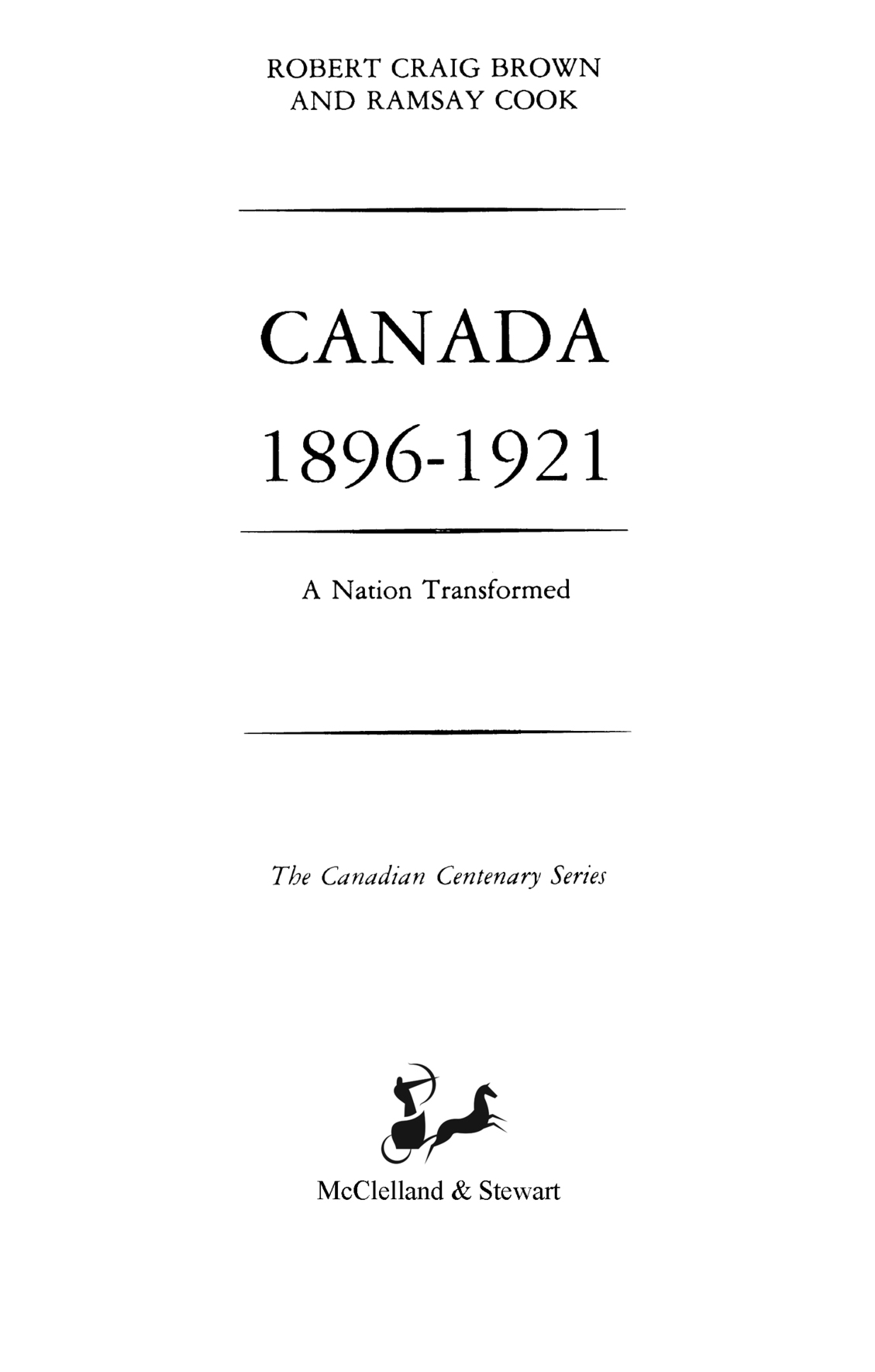All rights reserved. The use of any part of this publication reproduced, transmitted in any form or by any means, electronic, mechanical, photocopying, recording, or otherwise, or stored in a retrieval system, without the prior written consent of the publisher or, in case of photocopying or other reprographic copying, a licence from the Canadian Copyright Licensing Agency is an infringement of the copyright law.
Cover art: The 22nd (French Canadian) Battalion repairing trenches, July 1916. Retrieved via Canada. Department of National Defence. Library and Archives Canada PA-000253
To Professor D. J. McDougall
A History of Canada
Ramsay Cook, EXECUTIVE EDITOR
1. Tryggvi J. Oleson Early Voyages and Northern Approaches, 10001632
2. Marcel Trudel The Beginnings of New France, 15241663
3. W. J. Eccles Canada under Louis XIV, 16631701
4. Dale Miquelon New France, 17011744
5. G. F. G. Stanley New France, 17441760
6. Hilda Neatby Quebec, 17601791
7. Gerald M. Craig Upper Canada, 17841841
8. Fernand Ouellet Lower Canada, 17911840
9. W. S. MacNutt The Atlantic Provinces, 17121857
10. J. M. S. Careless The Union of the Canadas, 18411857
11. E. E. Rich The Fur Trade and the Northwest to 1857
12. W. L. Morton The Critical Years, 18571873
13. Peter B. Waite Canada, 18741896
14. Robert Craig Brown and Ramsay Cook Canada, 18961921
15. John Herd Thompson with Allen Seager Canada, 19221939
16. Morris Zaslow The Opening of the Canadian North, 18701914
17. Morris Zaslow The Northward Expansion of Canada, 19141967
18. D. G. Creighton Canada, 19391957
19. J. L. Granatstein Canada, 19571967
ALSO AVAILABLE IN PAPERBACK
Volumes I, III, VII, and XII of The Canadian Centenary Series were published with the help of grants from the Humanities Research Council of Canada.
CONTENTS
Canada 18961921
For material in the illustration sections of this book, acknowledgement is made to the following sources:
The Archives of Saskatchewan for The New Canada.
The Public Archives of Canada for Immigrants Landing at Quebec City; The City Tenement; The Bunkhouse Men; The Last Best West; Loading the Vegetable Crop; Mr. Rogersons Parlour; A Contemporary School Room; The Band of Hope; The Birth of Saskatchewan; Eucharistic Congress Procession; Halifax Market and Post Office; Winnipeg City Hall; En route to a Church Supper; The Neglected Child; Women at War; Canada at War: Seizing a Kopje; The Wounded at Courcelette; Moving up to Vimy; Sir Robert Borden Launches the Victory Loan; Sir Wilfrid Lauriers Funeral Cortege.
The Vancouver Public Library for Indian Immigrants Debarred at Vancouver; The Utilities Heyday.
The Glenbow Foundation for Steam Tractors Ploughing; Harvesting at Vegreville.
The Manitoba Archives for Executive of the Manitoba Equal Suffrage Club.
Eatons of Canada for The New Woman at Eatons Beauty Salon, 1920.
The Nanaimo and District Museum Society and Archives for B.C. Miners Liberation League.
The Winnipeg Police Department for Anti-Strike Demonstration in Winnipeg.
Bell Canada for the Adelaide Street Telephone Exchange.
The Canadian Centenary Series
Half a century has elapsed since Canada and Its Provinces, the first large-scale co-operative history of Canada, was published. During that time, new historical materials have been made available in archives and libraries; new research has been carried out, and its results published; new interpretations have been advanced and tested. In these same years Canada itself has greatly grown and changed. These facts, together with the centenary of Confederation, justify the publication of a new co-operative history of Canada.
The form chosen for this enterprise was that of a series of volumes. The series was planned by the editors, but each volume will be designed and executed by a single author. The general theme of the work is the development of those regional communities which have for the past century made up the Canadian nation; and the series will be composed of a number of volumes sufficiently large to permit adequate treatment of all the phases of the theme in the light of modern knowledge.
The Centenary History, then, was planned as a series to have a certain common character and to follow a common method but to be written by individual authors, specialists in their fields. As a whole, it will be a work of specialized knowledge, the great advantage of scholarly co-operation, and at the same time each volume will have the unity and distinctive character of individual authorship. It was agreed that a general narrative treatment was necessary and that each author should deal in a balanced way with economic, political, and social history. The result, it is hoped, will be an interpretative, varied, and comprehensive account, at once useful to the student and interesting to the general reader.






